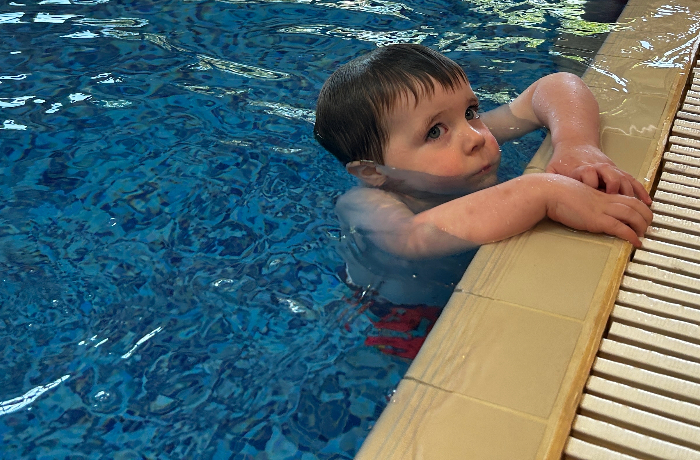Can my baby swim with an ear infection?

If your baby has an ear infection, the advice is to wait until the infection has cleared before entering the pool rather than risk the condition becoming worse.
Here, we look at the main types of ear infection, their causes and symptoms and how to help alleviate them to get back to your baby swimming lessons.
Common ear infections in babies
Ear infections are fairly common in babies and will often come on quickly. They may follow a cold and can bring on a high temperature. You might suspect an ear infection if your baby is rubbing their ear, but other symptoms can include fever (a high temperature of 38C or more), irritability or restlessness.
There are two main types of ear infections babies tend to suffer from – middle ear and outer ear. Middle ear infections occur behind the eardrum, while outer ear infections include the inside of the ear right through to eardrum. Also known as otitis externa or swimmer’s ear, this type of infections is caused by inflammation of the skin in the ear canal. It can occur when water stays in the ear canal for long periods of time, providing the perfect environment for germs to grow and infect the skin. Germs, found in swimming pools are the most common cause of swimmer’s ear. Some babies, due to shape of their outer ear, are more prone to ear infections, as water tends to remain in the ear.
The main symptoms of swimmer’s ear are:
- Itching or discomfort inside the ear
- Redness and swelling of the ear
- Pain when the infected ear is tugged or when pressure is placed on the ear
- Pus draining from the infected ear.
Ear infections and swimming: next steps
If you suspect your baby may have an ear infection, it’s wise to avoid the swimming pool until it’s cleared. You should also avoid getting water, soap or shampoo in their ear canal in the bath.
Consult your doctor or pharmacist for advice on treating the symptoms of middle or outer ear infection.

